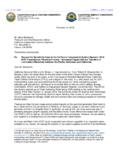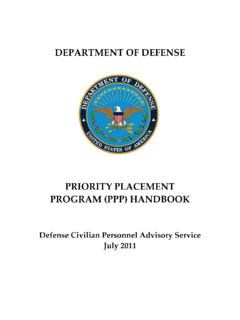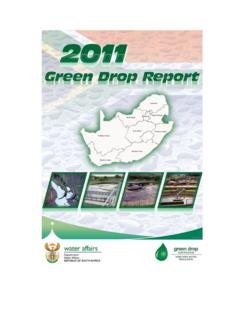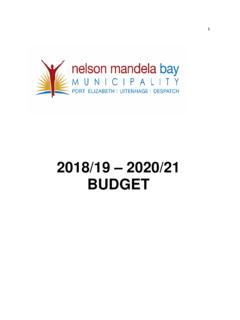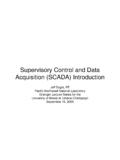Transcription of Energy Efficiency and Conservation Master Plan up to 2030
1 Energy Efficiency and Conservation Master plan up to 2030. Sustainable and Renewable Energy Development Authority (SREDA). and Power Division Ministry of Power, Energy and Mineral Resources Government of the People's Republic of Bangladesh March 2015. TABLE OF CONTENTS. Executive Summary 1. Background .. ii Energy Demand .. ii 2. Master plan .. v Objective of Energy Efficiency and Conservation Master v Overview of Energy Consumption .. vi EE&C Potential .. viii Toward Self-Reliant EE&C Society : Target and Implementation Roadmap .. ix plan .. x x Roles and Responsibilities .. x EE&C Programs .. xi Monitoring and Review of the EE&C Programs .. xii 4. Economic xiii 5. Capacity Development and Awareness Raising .. xv Chapter 1 Introduction .. 1. Background .. 1. Objective of the Energy Efficiency and Conservation Master plan .. 6. Overview of Energy and Electricity .. 7. Existing policies on Energy supply and Energy use including acts, rules, regulations, standards, guidelines and projects.
2 13. Stakeholder's Participation in EE&C Planning and Policy Making .. 15. Chapter 2 Master plan .. 16. Master plan .. 16. Roadmap (from 2015 up to 2030, every 5years) .. Error! Bookmar Monitoring and Review of the plan .. 24. Chapter 3 Action plan .. 27. EE&C Programs (Overview) .. 35. Energy Management Program .. 35. EE ( Energy Efficiency ) Labeling Program .. 46. EE Building Program .. 53. EE&C Financial Incentive Programs .. 61. Government Own Initiative on EE&C Implementation .. 71. Country's Energy Consumption Data Collection Mechanism .. 73. Global Warming Countermeasure .. 75. Cooperation with International Donor Agencies .. 77. i Chapter 4 Economic Analysis of the EE&C Programs .. 78. Background and Objectives .. 78. Economic Impact of EE&C Implementation .. 78. Cost-Benefit Analysis .. 79. Cost Effectiveness Analysis .. 83. Chapter 5 Capacity Development and EE&C Awareness Raising .. 86. 86. Roles of the Government on Capacity Development and Awareness Raising.
3 86. Capacity Development for the 86. Capacity Development for Energy Experts .. 87. Capacity Development and Awareness Raising for Private Sectors .. 87. Awareness raising for Residential 88. Roadmap .. 88. ii Energy Efficiency and Conservation Master plan Foreword Energy has become one of the most important factors for better economic growth and people's life in Bangladesh. After decades of dependency on domestic natural gas, we find ourselves not equipped with sufficient Energy resources in our land, and will gradually rely on imported fuels. Also, we are well aware that the use of fossil Energy increases Greenhouse Gas emission, which accelerates global warming and causes climate change, and suffers our country by natural calamities. Energy Efficiency and Conservation is a cross-cutting issue for all the people. We hereby issue the Energy Efficiency and Conservation Master plan , and declare our unyielding commitment of its implementation.
4 ABBREVIATION. Abbreviation Meaning AC Air Conditioner ACEA Accredited Energy Auditor ADB Asian Development Bank AFD Agence Fran aise de Development APF Annual Performance Factor APP Asia Pacific Partnership BAB Bangladesh Accreditation Board BAU Business as Usual BBS Bangladesh Bureau of Statistics BCCF Bangladesh Climate Change Resilience Fund BCIC Bangladesh Chemical Industries Corporation BCSA Bangladesh Cold Storage Association BCSIR Bangladesh Council of Scientific and Industrial Research BDS Bangladesh Standard BERC Bangladesh Energy Regulatory Commission BGMEA Bangladesh Garment Manufacturers & Exporters Association BJMA Bangladesh Jute Mills Association BNBC Bangladesh National Building Code BNBC. New Version of Bangladesh National Building Code [Revised]. BPC Bangladesh Petroleum Corporation BPDB Bangladesh Power Development Board BRESL Barrier Removal for Energy Standards and Labeling BRMA Bangladesh Re-Rolling Mills Association BSFIC Bangladesh Sugar & Food Industries Corporation BSTI Bangladesh Standardization and Testing Institute BTMA Bangladesh Textile Mills Association BUET Bangladesh University of Engineering and Technology CBM Condition Based Maintenance CCEB Catalyzing Clean Energy in Bangladesh CDM Clean Development Mechanism CEA Certified Energy Auditor CEM Clean Energy Ministerial CFL Compact Fluorescent Lamp CNG Compressed Natural Gas COP Co-efficient of Performance CP Counter Part CPP Critical Peak Pricing CSPF Cooling Season Performance Factor CSR Corporate Social Responsibility DB Data Base ab - i Abbreviation Meaning DNCRP Directorate of National Consumer Rights Protection DoE Department of Environment DSM Demand-Side Management EC Energy Conservation ECCJ Energy
5 Conservation Center, Japan ECR Environment Conservation Rules EE Energy Efficiency EE&C Energy Efficiency & Conservation EER Energy Efficiency Ratio EGCB Electricity Generation Company of Bangladesh EIB European Investment Bank EM Energy Manager EMS Energy Management System ERD Economic Relation Division (Ministry of Finance). ESCO Energy Service Company FS Feasibility Study FY Financial Year GBG Green Building Guideline GDP Gross Domestic Product GEF Global Environmental Facility Deutsche Gesellschaft f r Internationale Zusammenarbeit GmbH. GIZ. (German International Development Corporation). GoB Government of the People's Republic of Bangladesh GoJ Government of Japan GW Gigawatt HBRI Housing and Building Research Institute HR Human Resource HVAC Heating, Ventilating, and Air Conditioning IAP Interim Action plan ICS Improved Cooking Stove ICT Information Communication Technology IDCOL Infrastructure Development Company Limited IEA International Energy Agency IEC International Electrotechnical Commission IPCC Intergovernmental Panel on Climate Change IPEEC International Partnership for Energy Efficiency Cooperation IPP Independent Power Producer IRENA International Renewable Energy Agency ISO International Organization for Standardization JCC Joint Coordination Committee JCM Joint Crediting Mechanism JERI Japan Economic Research Institute Inc.
6 JICA Japan International Cooperation Agency ab - ii Abbreviation Meaning J-POWER Electric Power Development Co., Ltd. kg oe kg of oil equivalent KPI Key Performance Indicators ktoe kilo ton of oil equivalent LDC Least Developed Country LGED Local Government Engineering Department LNG Liquefied Natural Gas LPG Liquefied Petroleum Gas MAC Marginal Abatement Cost MDG Millennium Development Goal MEPS Minimum Energy Performance Standard METI Ministry of Economy, Trade and Industry (Japan). MGI McKinsey Global Institute MIC Middle Income Country MOC Ministry of Commerce MOEF Ministry of Environment and Forest MOHPW Ministry of Housing & Public Works MOI Ministry of Industry MPEMR Ministry of Power, Energy and Mineral Resources MW Megawatt NBFI Non-bank Financial Institution NBNBC New Bangladesh National Building Code NCTB The National Curriculum and Text Book Board NGO Non-Government Organization ODA Official Development Assistance OECD Organization for Economic Co-operation and Development OJT On the Job Training PDB Power Development Board PF Power Factor or Plant Factor PGCB Power Grid Company of Bangladesh PMU Project Management Unit PSCDP Power Sector Capacity Development Program PV Photovoltaic PWD Public Works Department Rajdhani Unnayan Kartripakkha.
7 RAJUK. Capital Development Authority of the Government of Bangladesh RE Renewable Energy REB Rural Electrification Board SAARC South Asia Association for Regional Cooperation SCADA Supervisory Control And Data Acquisition SDG Sustainable Development Goal S&D Sales and Distribution SED Sustainable Energy Development ab - iii Abbreviation Meaning SHS Solar Home Systems SME Small and Medium size Enterprise SREDA Sustainable and Renewable Energy Development Authority SWH Solar Water Heater TA Technical Assistance (Capacity Development). TBM Time Based Maintenance toe tonne of oil equivalent TOU Time of Use TPP Technical Project Proposal TSL Two Step Loan UNDP United Nations Development Program UNIDO United Nations Industrial Development Organization USAID United States Agency for International Development WB World Bank ab - iv Terms and Definition Term Meaning Policy EE&C policy The general expression of EE&C policy which includes EE&C programs and other measures, projects and systems for EE&C.
8 EE&C program The programs for EE&C implementation, which should be applied and is being organized. EE&C measure The measure for EE&C, such as heat recovery, EE. equipment, heat insulation, Energy management, etc. EE&C project The project for EE&C in which one or multiple EE&C. measures are introduced. Energy Primary Energy Energy form that is found in nature such as coal, oil, natural gas solar, and wind Secondary Energy The Energy that has been converted from a primary form, either renewable or non-renewable Energy , into another Energy form, such as gasoline or electricity for distribution and use. Commercial The Energy such as coal, gas, electricity, etc. which are Energy sold by Energy suppliers to Energy consumers Non-commercial The Energy such as biomass which is privately Energy produced and consumed Party, Party Groups of stakeholders such as individuals, business Sector operators, consumers, governments, NGOs, etc. Sector The categorized group of Energy consumers, such as industrial sector, business sector, residence, transportation and utility ( Energy supply).
9 Commercial The group of Energy consumers, which mainly use sector Energy at the buildings, where the business operators use for their business, such as office, shop, school, theater, hall, airport, etc. The sector includes public and also commercial (private) sectors. Transportation The group of Energy consumers, which mainly use Sector Energy for transportation vehicles such as car, train, ship and aircraft. Residential sector The group of Energy consumers, which mainly use Energy at residence for household purpose. Energy supply The group of Energy consumers, which mainly use side Energy for Energy supply, converting or processing the Energy , such as electricity supplier. The sector includes public and private sectors. Public sector and The terms should be used only when the explanations private sector distinguishing public (government) establishments and private (commercial) establishments are necessary Outline of EE&C Master plan ab - iv Executive Summary 1.
10 Background Energy Demand Bangladesh is a densely populated country with about 161 million people living in 147,570. square kilometers of land. In order to maintain a sustainable GDP growth of 7% and above up to 2020 and beyond, the Government of Bangladesh (GOB) needs to meet the essential Energy needs of the people and industries. For this purpose, demand-side Energy management is just as important as supply-side infrastructure development. The Sustainable & Renewable Energy Development Authority (SREDA) was thus established by Bangladesh Parliament in May 2012. as a national nodal organization for promoting demand-side Energy Efficiency and Conservation in the country. A rapidly growing country like Bangladesh needs a huge amount of Energy to feed its large growth appetite. There is no room for wasting Energy . Energy Efficiency (EE) means high competitiveness; it means producing more with less Energy . Thus earned Energy savings can be wisely reinvested.
